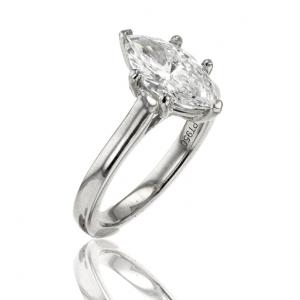The Future with Lab-Grown Diamonds - A Sustainable And Ethical Choice In Fine Jewellery
Shine bright like a diamond?
A Lab Grown diamond is essentially a diamond which has been grown in a laboratory.”
STIRLING, STIRLINGSHIRE, SCOTLAND, January 10, 2024 /EINPresswire.com/ -- Ian Gallacher, Manufacturing Jeweller and Diamond Merchant shared industry knowledge on Lab Grown Diamonds. — Andrew Gallacher
Lab-grown diamonds, also known as synthetic or cultured diamonds, are real diamonds in every sense. They share the same chemical composition, physical properties, and optical brilliance as their natural counterparts. The creation of lab-grown diamonds involves replicating the extreme pressure and temperature conditions that form natural diamonds beneath the Earth's surface. There are two primary methods employed in this process:
High Pressure High Temperature (HPHT): This method simulates the natural conditions of diamond formation deep within the earth, where carbon material is subjected to high temperatures and immense pressure, transforming into diamonds.
Chemical Vapor Deposition (CVD): The CVD process involves a more technologically advanced method where a carbon-containing gas is deposited onto a diamond seed inside a vacuum chamber, leading to the growth of a diamond layer by layer.
Advantages of Lab-Grown Diamonds
Lab-grown diamonds are gaining traction for several reasons:
Affordability: They typically cost less than mined diamonds, allowing buyers to opt for larger or better-quality stones within the same budget.
Ethical and Sustainable Production: These diamonds offer a conflict-free alternative to traditional mining, significantly reducing the environmental impact associated with diamond extraction.
Assured Quality: With technology that can control the diamond-growing environment, lab-grown diamonds can achieve high levels of quality and clarity.
Traceability: The origin of lab-grown diamonds is fully traceable, appealing to the growing number of consumers seeking ethical and responsible luxury.
Lab-Grown Diamonds in the Jewellery Industry
The jewellery industry's embrace of lab-grown diamonds is not merely a trend but a response to the growing demand for sustainable and ethically sourced luxury items. Jewellers and designers are increasingly incorporating lab-grown diamonds into their collections, offering a modern take on timeless elegance.
Educating the Consumer
As the popularity of lab-grown diamonds increases, so does the need for consumer education. Jewellers, gemologists, and industry experts are focusing on providing transparent information to help consumers make informed decisions about their diamond purchases. Understanding the differences between lab-grown and natural diamonds, and the benefits of each, empowers consumers to choose pieces that align with their values and preferences.
The Future is Bright
The rise of lab-grown diamonds marks a significant shift in the fine jewellery landscape. As technology continues to advance and consumer awareness grows, these diamonds are set to play a pivotal role in the future of luxury jewellery. They represent a harmonious balance between luxury and sustainability, offering a responsible choice for the discerning, ethically-minded consumer.
The emergence of lab-grown diamonds is a clear indicator of the changing dynamics in the jewellery industry, aligning luxury with sustainability and ethics. This innovation in diamond production not only offers new possibilities for designers and jewellers but also represents a significant step towards a more responsible and conscientious approach to luxury.
A kind word from Ian Gallacher Jewellers
"Choosing between a lab-grown diamond and an earth-mined diamond is akin to selecting between a greenhouse-grown orchid and one that's bloomed in the wild. Both are genuine, stunningly beautiful, and identical in their essence. Yet, one is cultivated with precision and care in a controlled environment, while the other is a rare gift of nature, formed over millennia under the earth. Each holds its own unique allure and story – one of human ingenuity and the other of nature's timeless artistry."
Lewis Gavin Cowan
Business View
email us here
Legal Disclaimer:
EIN Presswire provides this news content "as is" without warranty of any kind. We do not accept any responsibility or liability for the accuracy, content, images, videos, licenses, completeness, legality, or reliability of the information contained in this article. If you have any complaints or copyright issues related to this article, kindly contact the author above.


